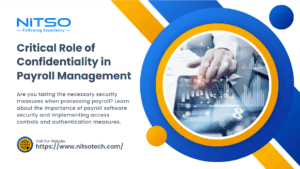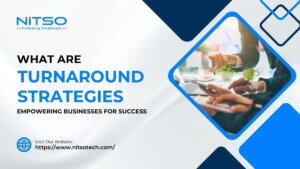The recruitment process is changing, and employers are increasingly turning to quiet hiring as a more efficient way to find suitable candidates. Some hiring managers are turning to quiet hiring for its efficiency benefits over traditional job postings. This approach saves time and money, but comes with challenges. Understanding the benefits and potential drawbacks of this approach is essential for those considering executing it in their association. Additionally, utilizing it in HR technology can help streamline the process even further.
Table of Contents
What is Quiet Hiring?
Quiet Hiring is an alternative recruitment process that is becoming increasingly popular among employers. Rather than relying on traditional job postings, Quiet Hiring relies on passive job postings, referrals, and targeted outreach to find suitable candidates. This approach is often used in highly competitive markets or for executive-level and specialized positions, as it can provide recruiters with a more efficient way to fill roles with the best possible candidates. Additionally, Quiet Hiring allows recruiters to build a pipeline of potential hires for future roles.
In the search to source perfect employees, employers have been constantly evolving their hiring practices. One such development is Quiet Hiring, which has been gaining popularity over the years. The method involves connecting recruiters with qualified candidates without advertising or an extended application process, saving companies time and effort. Instead, recruiters focus their efforts on finding exceptional talent at a much faster pace than traditional methods of recruitment.
What is the process of Quiet Hiring?
The process of Quiet Hiring starts by identifying potential candidates through passive job postings, referrals from within the company or its network, or direct outreach on social media platforms like LinkedIn. Once these potential candidates have been identified, recruiters can then contact them directly and begin the process of evaluating their skillset and qualifications in order to determine if they would be a good fit for the role in question.
This alternative approach begins with identifying possible suitors through indirect methods such as passive job postings or word-of-mouth recommendations from existing employees or network partners. Directly reaching out via social media sites like LinkedIn is also gaining momentum. Once promising talent has been identified, recruiters must begin the process of evaluating before deciding whether they are qualified enough for the position at hand.
Once suitable candidates have been identified, recruiters can then move forward with interviews or other assessments depending on the nature of the position being filled. It’s important to note that while this process eliminates many of the steps involved in traditional recruitment methods such as advertising jobs and sorting through large numbers of resumes it does require additional effort from both sides – employers must make sure they have proper processes in place when reaching out to potential candidates as well as ensuring that their employer brand is properly represented throughout the recruitment process.
Finally, HR technology plays an important role in helping streamline this entire process from start to finish – from helping identify ideal candidates through automated sourcing tools all the way up to using analytics-driven software solutions that allow companies to track key performance indicators (KPIs) related to recruiting efficiency and candidate engagement levels over time.
Benefits of Quiet Hiring
The advantages of quiet hiring are becoming more and more apparent to businesses. This recruitment process offers several benefits that conventional approaches simply cannot deliver. Here are some of the key benefits:
- Expanded Talent Pool: Quiet hiring allows recruiters to look beyond those who are actively job searching and instead identify passive candidates. This presents employers with the opportunity to draw from a wider range of applicants, potentially allowing them to tap into individuals with different backgrounds than they may have access to through other methods.
- Cost Savings: With quiet hire processes, there is no need for costly advertising or subscriptions to services such as LinkedIn Recruiter; thus, employers can save on recruitment costs associated with traditional recruitment methods.
- Enhanced Candidate Experience: By shying away from publicly posted job listings, companies can avoid potential discrimination issues that can arise from written descriptions of roles or qualifications required for positions. Moreover, this approach eliminates any disappointment experienced by applicants when jobs are filled without notifying them beforehand or removed altogether from public listings.
- Culture & Values Focus: Through quiet hiring, recruiters have greater flexibility in terms of whom they contact and how they communicate with these individuals throughout the process; this enables them to focus more on their company culture and values when determining which candidate is best suited for a role rather than relying solely on credentials listed on resumes or cover letters.
- Faster Decisions: As opposed to other recruitment tactics which involve multiple interviews and assessments before making any final decision about an applicant’s suitability for a position, quiet hire processes enable organizations to quickly make decisions based on information gathered during initial conversations with potential hires or references provided by mutual connections – thereby speeding up the whole procedure significantly
Challenges Facing in Quiet Recruiting
The adoption of Quiet Hiring techniques poses significant challenges for employers. The biggest issue they face is the lack of insight into prospective job applicants; traditional job postings are not part of this process, making it difficult for them to scout relevant talents and assess their competencies. Another hurdle lies in distinguishing whether or not adopting Quiet Hiring methods has been successful since there are few established metrics that can be utilized to judge its effectiveness accurately.
Another challenge with Quiet Hiring is complying with employment laws and regulations. Since Quiet Hiring does not involve traditional job postings or formal applications, there is a risk of overlooking qualified applicants who would otherwise meet all legal requirements for the role. On top of this, there is also a need for clarity on the best approaches and techniques when it comes to executing Quiet Hiring in an association.
Fortunately, HR software systems can help alleviate some of these challenges. Today’s automated sourcing tools are fast and effective at identifying potential hires from sites like LinkedIn, Twitter, or Facebook. Additionally, these tools can help streamline resume processing and save valuable time. Analytics-driven software solutions can then help recruiters quickly review resumes and narrow down their list of potential candidates even further. Additionally, online assessments can also provide valuable insight into an applicant’s skillset before they are invited in for an interview which helps ensure that companies hire only the best person for the job.

Impact of Quiet Hiring on the Recruiting Process
The use of quiet hiring is becoming increasingly popular among employers, as it offers a more efficient approach to filling job openings. This process provides cost savings and reduces administrative demands, while also yielding higher quality and more diverse applicant pools. Quiet hiring offers the opportunity to target particular groups such as veterans or minority-owned businesses, allowing recruiters to discover qualified candidates who may not be actively searching for employment.
HR technology helps to streamline this recruitment method by providing automated sourcing tools, analytics-driven software solutions, and online assessments that make it easier for employers to identify suitable applicants without having to rely on traditional job postings or application forms. These tools can also help ensure compliance with recruitment legislation by tracking all interactions between recruiters and job seekers from initial contact through onboarding.
Article you might be intrested in How can an HRMS system be integrated with other business systems.
Practical Steps to Implement Quiet Hiring in Your Organization
- Taking practical steps toward implementing quiet hiring in an organization involves meticulous legal compliance. Familiarizing oneself with discrimination and equal opportunity employment laws, as well as regulations on data sharing confidentiality and privacy are key to ensuring that the recruitment process stays above board. Additionally, it’s essential to keep up-to-date with all labor regulation requirements governing employee compensation.
- Step two of recruiting top talent requires defining all essential roles within your company. Once these are identified, creating detailed job descriptions helps recruiters understand precisely what they want in an applicant. Better yet, personalized postings broaden access to suitable candidates looking for work at a match suitable firm.
- Thirdly, it’s important to create a recruitment strategy with an emphasis on privacy. This means taking extra care in how you source potential hires, such as using anonymized emails or private messaging platforms instead of public platforms like LinkedIn or Facebook. It also involves developing policies around data collection and storage, as well as establishing protocols for how employee information is shared with third parties during onboarding processes.
- Fourthly, leveraging digital resources such as networking sites and job boards can be incredibly helpful in finding potential candidates who may not be actively searching for a job but would still make great additions to your team. Additionally, this will help spread awareness about your open positions so that potential applicants know where they can find more information about them.
- Finally, tracking progress is essential for assessing whether or not quiet hiring is successful for your organization – especially if it is something new or different from what was done previously -and making necessary adjustments if needed. It’s important to evaluate metrics such as time-to-hire ratio, cost-per-hire ratio, quality-of-hire score (measuring how qualified each candidate is), diversity rate (the percentage of minority hires), among others so that you can accurately measure performance over time and continue improving upon it accordingly.
By following these steps, employers can ensure they are using quiet hiring in a manner that is compliant with the law and optimized for finding suitable candidates while reducing costs associated with traditional recruitment methods such as job postings or applications forms – ultimately leading to improved efficiency throughout their organizations overall
How does HR tech help with quiet hiring?
HR technology is an essential tool for ensuring a successful quiet hiring process. Through automated sourcing tools, potential candidates can be quickly identified and contacted using different online job portals and social media networks. With the use of analytics-driven software solutions, employers can analyze their recruitment efforts’ efficiency to measure success effectively.
Furthermore, through HR technology, companies gain insights into a candidate’s experience level, education background, skillset and more to help employers make informed decisions about hiring the most deserving candidates. Data provided by automated assessments helps identify individuals with a higher potential for success in an organization. This information allows recruiters to improve their decision-making process when selecting candidates and reduce bias during recruitment.
Articles you might be intrested in
Dos and Donts While Implementing Quiet Hiring
When employers are considering implementing quiet hiring, there are certain dos and don’ts that they should keep in mind to ensure the process is as effective and efficient as possible.
Do:
- Avoid public job postings – quiet hiring relies on passive job postings, referrals, and targeted outreach to find suitable candidates. Public job postings can be time consuming and limit the potential pool of qualified candidates.
- Keep candidate identities confidential – when conducting the recruitment process, maintain confidentiality throughout by using secure online systems for background checks and storing any data securely. This will help protect both the employer’s reputation and the candidate’s privacy.
- Objectively review resumes – take time to read through each resume carefully, assessing it objectively and avoiding decisions based on surface characteristics such as gender or ethnicity. The goal is to find the best fit for the role based on qualifications, experience, skillset, attitude, etc., not preferential biases.
- Provide timely feedback – make sure you provide feedback quickly so that potential applicants know their status early on in the process. This will reduce confusion while also helping you identify any areas where you can make improvements to your recruitment strategy.
Don’t:
- Rely solely on technology – while automated sourcing tools and analytics-driven software solutions can streamline parts of your recruitment process, it’s important not to rely too heavily on technology when assessing potential candidates for a role. Speak with them directly to get a better sense of their skillset and experience prior to making a decision.
- Make snap judgments – it can be easy to make snap judgments about potential hires after only speaking with them briefly or seeing their resume for a few minutes, but take time during your conversations with them to really understand who they are before making any decisions about them potentially joining your team.
- Rush into contracts without due diligence – it may seem like an attractive option at first glance, but rushing into contracts without conducting proper due diligence could end up costing you more than just money in the long run; it could hurt your reputation as well if things don’t work out as planned with new hires down the line. Take care when signing off on contracts!
By following these dos and don’ts while implementing Quiet Hiring, employers can ensure they are taking full advantage of this new recruitment process while reducing costs associated with traditional methods such as public job postings or applications forms
Final Thoughts
In conclusion, quiet hiring is revolutionizing the recruiting process in many ways. By reducing costs and increasing quality and diversity of potential hires, this alternative form of recruitment has much to offer organizations looking to fill roles quickly and effectively while eliminating bias from the selection process. Furthermore, leveraging HR technology like automated sourcing tools and analytics-driven solutions can further help make the most out of this revolutionary approach.
Article you might be intrested in Talent Sourcing Strategy: A Guide for Recruiters








0 Comments